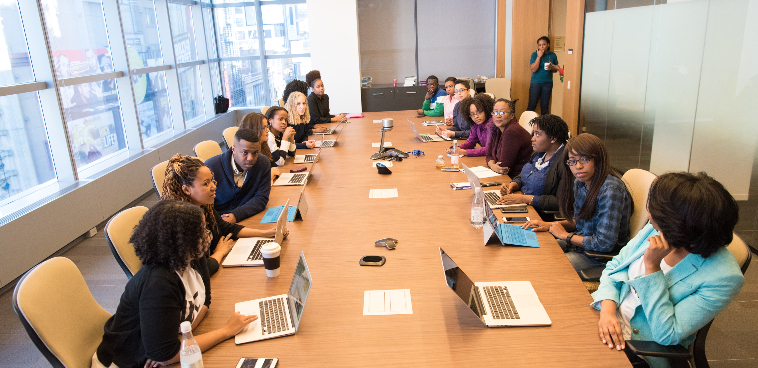After a tumultuous 2020 that shone a spotlight on some of the ever-present racial disparities and injustices in our world, many organizations and individuals have made commitments to increase diversity, equity and inclusion in terms of education and internal business initiatives.
Many high-profile companies set aggressive DEI goals at the end of 2020. For example, Target announced its goal of increasing the representation of Black employees in its workforce by 20% over three years, and PepsiCo announced plans to increase Black representation in US managerial roles by 30% and Hispanic representation by 10% by 2025.
However, DEI professionals have been doing this crucial work for years before these issues were highlighted on a national, mainstream media stage. In central Ohio, the Central Ohio Diversity Consortium has been seeking to collectively advance DEI by collaboration and knowledge transfer across organizations and businesses throughout central Ohio since 2006.
In the 15 years since beginning work in the field, CODC’s growing team of DEI leaders has learned many important lessons about DEI expansion efforts.
What someone calls a “best practice” isn’t always the best practice for every organization
DEI is never a one-size-fits-all endeavor. The understanding of individual organizational culture, mission, values and processes is vital to determining whether a particular strategy or approach aligns well with an organization or if a different route would be more effective.
Similarly, DEI practitioners can give the best advice in the world based on the best research. However, if there isn’t resulting change in behavior, leadership or management, that advice is meaningless.
Creating fair and equitable systems never involves taking away from others
When discussing the importance of creating fair and equitable processes and systems for all, it’s never about taking from those who have historically benefitted from those systems. It’s about ensuring that everyone has access to the resources necessary to help them reach their goals and be successful in both work and life.
This is mutually beneficial for all parties. In fact, there’s research that supports the positive effect this can have on business. According to research cited by HR Daily Advisor, 67% of job applicants value diversity, and 57% of employees believe employers should be doing more to promote diversity at their companies.
Being a DEI professional is not for the faint of heart
Constantly dealing with pushback, isolation and being questioned on the validity of the role and the work is part of the DEI professional job description. People who don’t have thick skin and understand the importance of relationship-building, influence and strategic thinking will struggle to find success in this line of work. Leaders need to recognize this resistance and support the DEI role within organizations.
No matter how influential DEI professionals are, there will always be about 20% of people who will resist, 60% who are in limbo, and 20% excited about DEI work. Have that expectation, and then work intentionally to build techniques to effectively interact with individuals in all three of those groups.
DEI professionals must accept their inherent bias before leading others
No one is immune to having bias. DEI professionals cannot effectively carry out their duties and create positive change if they don’t first face their faults. It’s crucial to accept this hard truth and learn to manage those flaws that may have a negative impact on others.
Everyone has a role in whether an environment feels inclusive
DEI professionals are an important component of ensuring a welcoming and productive environment. Their behavior absolutely plays a role in what the environment looks and feels like. It is critical to remember that DEI is not HR-only or leader-only work. HR plays a crucial role in successfully advancing a culture of DEI, but the work does not stop there.
In the same vein, the leader of DEI work is not solely responsible for the success or failure of a strategy. It takes everyone from C-suite executives to managers and supervisors to advance DEI initiatives.
DEI professionals can’t let their passion for DEI make them lose sight of what’s important
At the end of the day, DEI should help companies cultivate satisfied, engaged associates and garner a strong community brand.
According to a 2018 McKinsey diversity report, the repercussions for companies in the bottom percentage in diversity are clearly visible. It states, “Companies in the bottom quartile for both gender and ethnic/cultural diversity were 29% less likely to achieve above-average profitability than were all other companies in our data set. In short, not only were they not leading, they were lagging.”
DEI work is about human behavior and culture change — and it takes time. It’s not an easy road, but it can reap great rewards for organizations, employees, customers and communities who choose to lead rather than lag.
Priscilla Hammonds is the assistant vice president of diversity & inclusion and community relations at Grange Insurance. With over 20 years of experience planning and facilitating diversity, equity and inclusion efforts in the workplace, Hammonds co-founded the Central Ohio Diversity Consortium in 2006 and currently serves as president. CODC provides organizations with beneficial resources to help positively advance and execute their DEI strategy. Connect with Hammonds on LinkedIn and learn more about the CODC.
If you enjoyed this article, sign up for SmartBrief’s free e-mails on leadership and HR, among SmartBrief’s more than 200 industry-focused newsletters.
